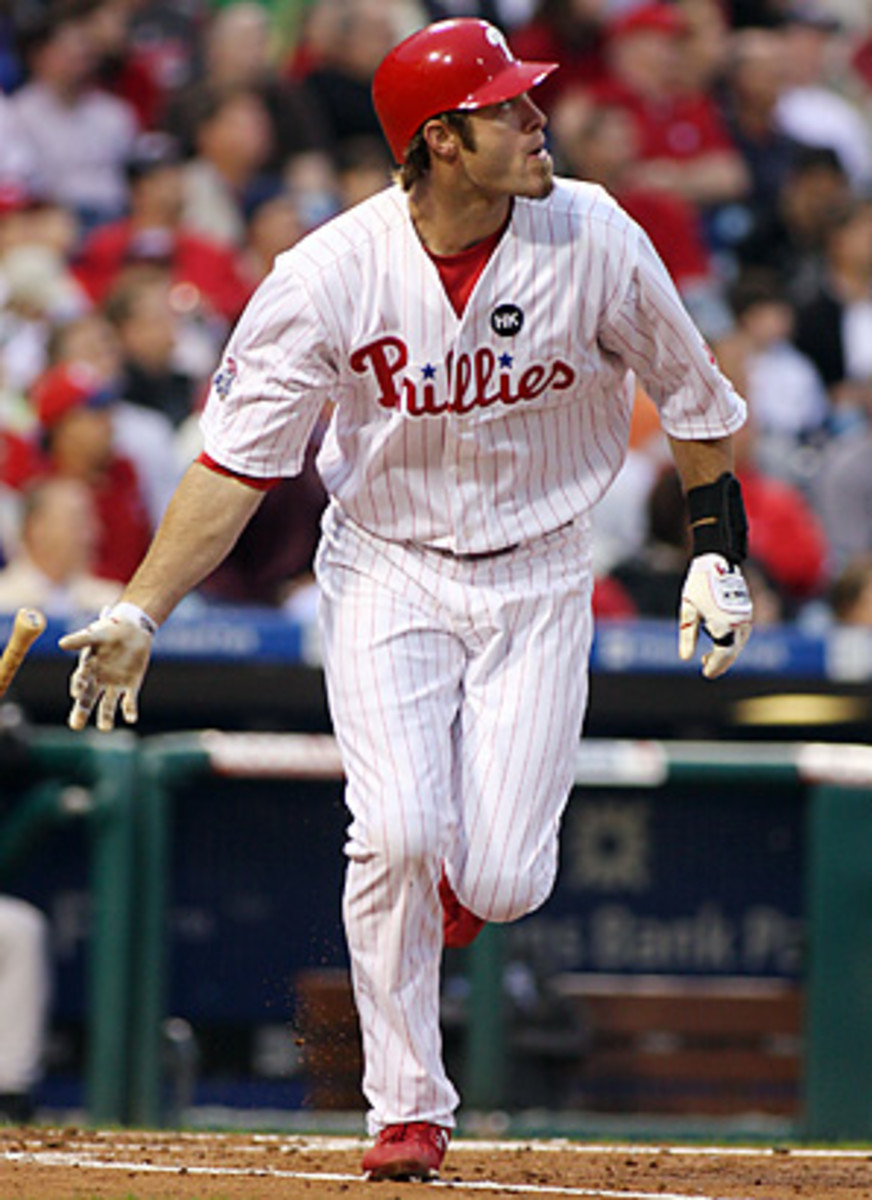Strategy room: Early-season stats often reveal little of full story
Something you hear time and again this time of season is that if this two-week stretch to begin the year occurred later, you would think nothing of it, good or bad. The reason for so much knee-jerk concern is these two weeks are all that we see in the year to date stats column. And it never hurts to be reminded that some players start hot, elevating your team in the standings, giving you points you can lose in the blink of an eye.
So I thought it would be fun to go back to last season and choose three arbitrary 14-day spans and check out some of the outlying performances. The lesson will be that since we did not do anything reactionary then, we should not do anything drastic now. There is nothing special about the three chose time frames. Any trio would have rendered ample examples of hot and cold streaks.
First let us see what happened from May 19 through June 8.
Adam Kennedy hit .372 with 3 homers and 11 RBI and 4 stolen bases. If that happened the first two weeks of this season, he would be on top of every sell high list. Speaking of selling high, Miguel Tejada hit a robust .460 with 3 homers over this 14-day period. Juan Pierre hit .357 and swiped 4 bags. Reputed average drain Mike Cameron hit at a .326 clip. Robinson Cano was on fire, checking in at .346, 3 homers, 11 runs and 12 RBI. Present Mark Teixeira owners take heed as the Yankees first baseman hit .392, knocking 5 out of the yard. Luke Scott was a Ruthian .409 with 6 dingers.
How about the strugglers? Jayson Werth had a career year, but only hit .146 while fanning 16 times. Hopefully you did not give up on Nyjer Morgan after he checked in with a .205 average. Previous to getting hurt, Miguel Montero was a popular choice to make the next leap at catcher. You certainly would not predict this based on his .182 stretch. If you sold low on Ryan Zimmerman and his .167 or Troy Tulowitski and his .150, you missed out on some serious production.
And the arms? Max Scherzer labored with an ERA of 7.02. John Lackey did a little better at 5.02. Everyone's favorite spring sleeper Brett Anderson was caught napping at 5.06. On the other hand, for everyone that ran out and picked up Livan Hernandez, he spun a 2.08 over this two-week stint. Bronson Arroyo bettered that at 1.06.
Let us move on a few months and see what happened between July 27 and August 9.
Old friend Morgan hit .321 with 6 steals. Zimmerman hit .489 with 6 homers. Rajai Davis hit .400 with 7 steals. Mike Napoli owners need to be patient as he is capable of .435 in a 14 day span. Cristian Guzman wailed away at a .457 clip. On the flip side, Scott wallowed at .194, Justin Morneau floundered at .196 and Jorge Cantu slipped to .174.
For the hurlers, the presently unemployed Yusmeiro Petit surprised at an ERA of 1.50. Clayton Kershaw was in control at 1.42. Youngster Mat Latos teased with 1.80. On the other hand, Cy Young candidate Justin Verlander ballooned to 5.57. Mark Buehrle was far from perfect at 8.35.
And finally, let's take a look from Sept. 7 to Sept. 20.
Troy Tulowitzki led the way at .394 with 5 long balls. Matt Wieters excited hitting .395 with 2 homers, 10 runs and 10 RBI. Vernon Wells cranked at .447. But Jhonny Peralta scuffled at .160. Kendry Morales hit only .146. Nelson Cruz fell to .162.
Clay Buchholz excelled with an ERA of .90. Scott Kazmir was at 1.40. The disappointing Cole Hamels did not disappoint for these two weeks at 1.20. John Danks was at .60 while Jair Jurrjens matched him. Not everyone fared so well as Chad Billingsley sloshed to 6.90. Ricky Nolasco labored at 5.90.
By this point, I am hoping you are saying enough already, we get it. Over a two-week period, anything can happen. Please stop spewing numbers like batting average and ERA that contain a bunch of noise and are relatively meaningless in such a small sample. But now you know how I feel when I am asked if getting Billy Butler is enough for Mark Teixeira.
Let us conclude with something a little more constructive. When discussing small samples, there are two typical questions. The first is just how long should we wait before we can rightfully get nervous? Second, is there anything we can look at to help filter out the noise in a two-week sample for both hitters and pitchers?
It really matters what stat you are looking at. And to be frank, you should really be focusing on the component stats like HR/FB, walk rate and contact rate as opposed to batting average and home runs. The same goes for pitchers. Do not focus on ERA and wins but K/9 and BB/9. It usually takes between one and two months to get a decent predictive sample for this data. So as hard as it be, try to hold out until Memorial Day before really panicking on a player.
That said, Bill James teaches us that extremes in small samples can be real and not noise. So the best manner to judge performance in the short term is looking at walk and strikeout rates for both hitters and pitchers. With the caveat that it is best to play around with your lineup at the fringes, with players you drafted as fungible entities, the tell-tale metrics to decide who to play are strikeout and walk rates for both hitters and pitchers.






































